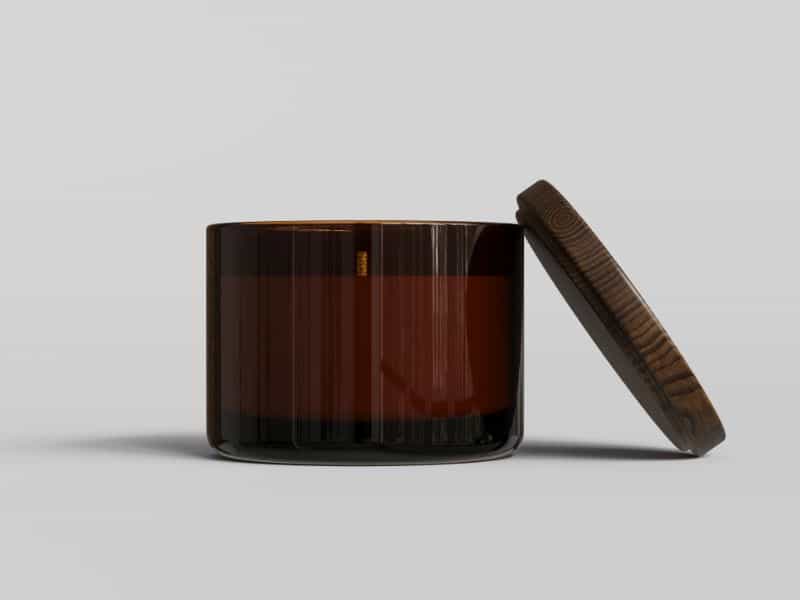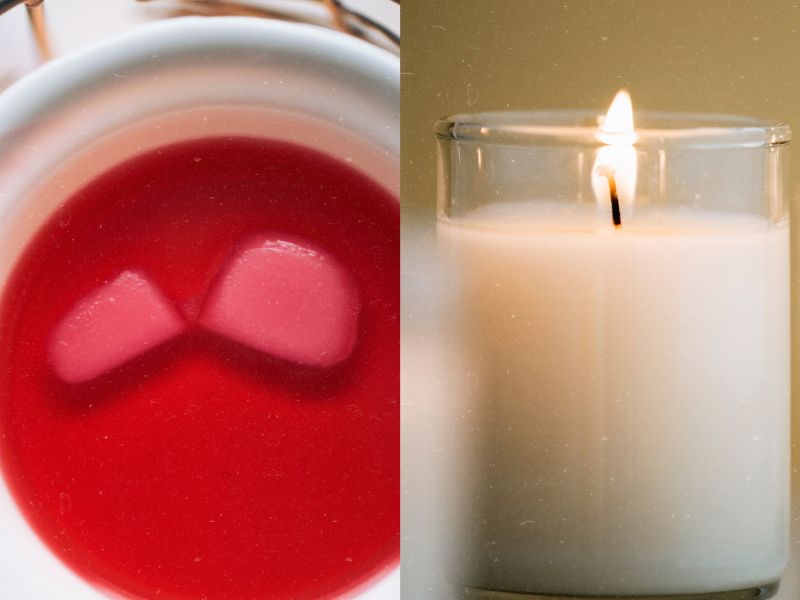Candle making is a popular hobby and understanding wax hardening is essential. Knowing how long it takes for candle wax to harden helps you understand when it is okay to start moving them so that you can put them away for curing.
Candle wax will harden in between 3 and 5 hours. However, it can take longer depending on the type of wax you are using. The time for candle wax to harden varies based on factors such as wax type, temperature, size, and additives.
Several factors affect the hardening time of candle wax. These include the type of wax, temperature, candle size, shape, and any additives used. In this article, we’ll explore these factors and learn how to control the hardening process.
How Temperature Impacts Wax Hardening
Temperature can impact the hardening of wax in a lot of ways.
Room temperature impacts wax hardening because the warmer it is in a room the longer it will take the candles to harden. The cooler it is the more quickly the candles will harden. However, it is important that it not be too cold so they don’t harden too quickly.
Here are some other temperature-related hardening issues.
Melting points
Different types of candle wax have different melting points. Paraffin wax melts at 120-160°F (49-71°C), soy wax at 120-180°F (49-82°C), and beeswax at 145-185°F (63-85°C). Knowing the melting points helps in selecting the right wax for your candles.
Cooling process
Once the wax is melted and poured into molds or containers, it must cool down to harden. The cooling process is crucial for candle quality. Wax should cool evenly and slowly to avoid issues like cracks, air bubbles, or wet spots.
Ideal room conditions
Room temperature and humidity affect the hardening process. The ideal room temperature for wax hardening is 68-77°F (20-25°C).
Lower temperatures may cause the wax to harden too quickly, while higher temperatures can prolong the hardening time. Keep humidity levels low to ensure proper wax hardening.
As we proceed, we will explore other factors affecting wax hardening and provide tips for making perfect candles every time.
Candle Size and Shape
Molds and containers
Candle molds and containers determine the final size and shape of your candles.
Smaller candles will harden faster than large ones. Smaller candles can cool faster allowing the wax to harden faster.
There are various materials for molds, such as metal, silicone, and plastic.
Containers like glass jars, tin cans, and ceramic pots are popular choices. Make sure to choose heat-resistant and non-flammable materials.
Thickness and diameter
Candle thickness and diameter impact the hardening time. Thicker candles take longer to harden, while thinner candles harden faster.
Keep in mind that larger-diameter candles require a longer wick and may need more time to burn evenly.
Effect on hardening time
Size and shape directly affect how long it takes for candle wax to harden. Smaller, thinner candles harden quicker because there’s less wax to cool.
Larger, thicker candles need more time, as they have a larger volume of wax that needs to cool down.
How to Speed Up Wax Hardening
Cooling methods
There are ways to speed up the wax hardening process. You can place the candles in a cool, dark place or use a fan to blow cool air over them.
The best way to speed up wax hardening is to space the candles out leaving plenty of room in between in a cool room out of direct sunlight. This will create plenty of space for the heat to to dissipate and rise to let the candles cool.
Another option is to put the candles in the fridge, but be cautious, as this can cause cracks or other issues.
Precautions for fast hardening
While speeding up the hardening process can save time, it’s essential to take precautions. Rapid cooling can cause cracks, shrinkage, or an uneven surface.
Make sure to monitor the candles and check for any issues. If you notice problems, adjust your cooling method accordingly.
By understanding how size, shape, and cooling methods impact wax hardening, you can create beautiful candles that harden at the desired rate.
Remember to take your time and pay attention to the process for the best results.
Additives and Their Effects on Hardening
Dyes and pigments
Adding color to candles is common, using dyes or pigments. These colorants can affect hardening time, especially if added in large amounts. Test small batches to find the right balance between color and hardening.
Fragrance oils
Scented candles often use fragrance oils. These oils can alter hardening time, depending on their concentration. Too much fragrance oil may cause the candle to soften, while too little might not give the desired scent. Aim for a balanced concentration, typically 6-12% by weight.
Hardeners and other additives
Some candle makers use hardeners to improve candle quality. Hardeners like stearic acid can make candles more durable and longer-lasting. However, they might also affect hardening time. Adjust your cooling process based on any additives you use.
Common Wax Hardening Issues
Shrinkage
Shrinkage occurs when the wax contracts as it cools. To minimize shrinkage, pour the wax at the right temperature and let it cool slowly. If needed, do a second pour to fill any gaps.
Air bubbles
Air bubbles can form during pouring or cooling. To prevent them, stir the wax gently when melting, and pour slowly. Tap the mold or container gently to release any trapped air.
Wet spots
Wet spots are areas where wax pulls away from the container, creating an uneven appearance. They occur due to rapid cooling or temperature fluctuations.
To avoid wet spots, pour the wax at the recommended temperature and cool slowly.
By understanding the impact of additives and troubleshooting common hardening issues, you can create high-quality candles. Always test small batches and adjust your methods as needed for the best results.
Frequently Asked Questions
To prevent cracks, pour the wax at the right temperature and let it cool slowly. Rapid cooling can cause cracks.
To speed up hardening, place candles in a cool, dark place or use a fan. Be cautious, as rapid cooling can cause issues.
Common hardening issues include shrinkage, air bubbles, cracks, and wet spots.
To avoid wet spots, pour wax at the recommended temperature and cool slowly. Rapid cooling or temperature fluctuations can cause wet spots.
Yes, hardeners like stearic acid can make candles more durable and longer-lasting but may affect hardening time.
Yes, testing small batches helps you find the right balance between additives and hardening, ensuring high-quality candles.
Conclusion
In conclusion, understanding how long it takes for candle wax to harden is crucial for creating beautiful, high-quality candles.
By considering factors like the type of wax, temperature, size, shape, and additives, you can control the hardening process and avoid common issues. Remember to be patient and pay attention to details when making candles.
With the right knowledge and techniques, you’ll be able to create stunning candles that burn evenly, release pleasant scents, and make perfect gifts or decorations for any occasion. Happy candle making!






